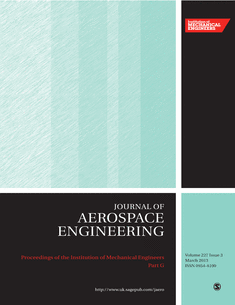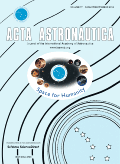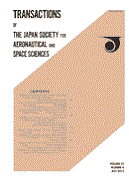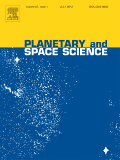
CEAS Space Journal
Scope & Guideline
Connecting research and innovation in the realm of space.
Introduction
Aims and Scopes
- Spacecraft Design and Engineering:
The journal emphasizes the design, development, and testing of various spacecraft systems, including nanosatellites, CubeSats, and larger spacecraft. It covers methodologies for optimizing performance, reliability, and functionality in space. - Propulsion Systems and Technologies:
Research on propulsion systems, including electric, chemical, and hybrid propulsion, is a core area. The journal publishes studies on propulsion efficiency, innovative designs, and applications in various space missions. - Materials for Space Applications:
A significant focus is on the development and testing of materials suitable for the harsh conditions of space. This includes studies on thermal protection systems, radiation shielding, and self-healing materials. - Mission Design and Systems Engineering:
The journal addresses the methodologies for mission planning, system integration, and engineering approaches that enhance mission success and efficiency, including model-based systems engineering. - Aerodynamics and Aerothermodynamics:
Research on the aerodynamic behavior of vehicles during atmospheric entry, ascent, and re-entry is extensively covered, including experimental and computational studies. - Space Environment Interaction:
Studies that investigate the interaction between spacecraft and the space environment, such as material degradation due to atomic oxygen or radiation effects, are key contributions. - Robotics and Autonomous Systems:
The journal includes research on robotic systems for space applications, including autonomous navigation, manipulation, and servicing of satellites and space structures. - Sustainability and Space Debris Mitigation:
Research focused on sustainable practices in space missions and technologies aimed at mitigating space debris is increasingly highlighted, reflecting a growing awareness of environmental impacts.
Trending and Emerging
- Advanced Manufacturing Techniques:
There is a growing emphasis on advanced manufacturing processes such as additive manufacturing and 3D printing for space applications. This trend reflects the need for customizable, lightweight, and efficient components that can be produced quickly and cost-effectively. - Sustainable Space Technologies:
Research into sustainable technologies, including eco-friendly propellants and materials that minimize environmental impact, is on the rise. This shift aligns with global efforts to promote sustainability in all sectors, including aerospace. - Autonomous Systems and AI in Space Operations:
The integration of artificial intelligence and autonomous systems for spacecraft navigation, control, and operation is a rapidly emerging theme. This reflects the need for improved efficiency and reliability in space missions. - In-Situ Resource Utilization (ISRU):
Studies on utilizing resources available in space, such as lunar regolith for construction and fuel production, are gaining popularity. This approach is seen as vital for long-term sustainability in space exploration. - Collaboration in Space Missions:
There is an increasing focus on international collaboration and partnerships in space missions, reflecting the complex nature of modern space exploration that often requires shared resources and expertise. - Space Debris Management and Mitigation Technologies:
Research on technologies and strategies for managing space debris is becoming increasingly important, as concerns about space sustainability and safety continue to grow. - Hybrid and Innovative Propulsion Systems:
Emerging propulsion technologies, including hybrid and air-breathing systems, are gaining focus as researchers seek more efficient and versatile solutions for various mission profiles.
Declining or Waning
- Traditional Chemical Propulsion Systems:
As the field shifts towards innovative propulsion technologies, traditional chemical propulsion systems are being overshadowed by research into electric and hybrid propulsion systems. This transition is due to the increasing demand for more efficient and sustainable propulsion methods. - Low Earth Orbit (LEO) Missions:
While LEO missions were previously a significant focus, there is a noticeable shift towards deep space exploration and interplanetary missions. This trend reflects the growing interest in missions beyond LEO, such as Mars exploration and lunar bases. - Conventional Materials Testing:
Research focusing solely on conventional materials without consideration for advanced or novel materials is declining. The journal is increasingly favoring studies that explore innovative materials designed for specific space applications. - Static Simulation Studies:
Static simulations of spacecraft dynamics are being replaced by more dynamic and integrated approaches that consider real-time operational scenarios and interactions with the space environment. - General Space Policy and Economics:
Discussions surrounding the economic aspects of space missions and policy frameworks appear to be waning, as the journal increasingly concentrates on technical advancements and engineering solutions.
Similar Journals

PROCEEDINGS OF THE INSTITUTION OF MECHANICAL ENGINEERS PART G-JOURNAL OF AEROSPACE ENGINEERING
Transforming Ideas into Aerospace SolutionsPROCEEDINGS OF THE INSTITUTION OF MECHANICAL ENGINEERS PART G-JOURNAL OF AEROSPACE ENGINEERING, published by SAGE PUBLICATIONS LTD, stands as a pivotal resource for those immersed in the disciplines of aerospace and mechanical engineering. With an ISSN of 0954-4100 and E-ISSN of 2041-3025, this journal not only contributes to the academic community but also reflects a robust commitment to advancing knowledge within these fields. Operating from the United Kingdom, it has garnered a respectable reputation, evidenced by its category quartiles—ranking Q3 in both Aerospace Engineering and Mechanical Engineering as of 2023. Established in 1989, the journal has evolved substantially over the years, serving as a platform for groundbreaking research and innovative methodologies. Researchers, professionals, and students alike will find a wealth of insights that foster collaboration and advance the frontiers of engineering. Although currently not available as an Open Access publication, the journal remains a critical reference point for those looking to deepen their understanding and contribute to ongoing developments in aerospace technology.

New Space-The Journal of Space Entrepreneurship and Innovation
Transforming Ideas into Cosmic VenturesNew Space - The Journal of Space Entrepreneurship and Innovation is a pivotal publication dedicated to advancing the field of aerospace through innovative research and practical insights. Published by Mary Ann Liebert, Inc., this journal serves as a crucial platform for scholars, engineers, and entrepreneurs interested in the burgeoning sectors of space technology and commercial space endeavors. With an ISSN of 2168-0256 and an E-ISSN of 2168-0264, New Space explores the intersection of engineering, sustainability, and business within the aerospace industry. The journal's impact is highlighted by its Q3 ranking in multiple categories, including Aerospace Engineering and Astronomy and Astrophysics, signifying its relevance in contemporary research dialogues. Although currently closed access, the journal's dedication to fostering innovations is clear as it addresses critical topics from safety and risk management to energy technologies and tourism in space contexts. Researchers and professionals seeking to influence the future of space entrepreneurship will find valuable content and a collaborative community within these pages, making New Space an essential resource in its field.

ACTA ASTRONAUTICA
Inspiring Innovation in Aerospace EngineeringACTA ASTRONAUTICA is a premier journal in the field of aerospace engineering, dedicated to advancing knowledge in space exploration and technology. Published by PERGAMON-ELSEVIER SCIENCE LTD in the United Kingdom, this journal boasts a prestigious Q1 ranking within its category as of 2023, positioning it in the top tier of aerospace engineering publications. With an ISSN of 0094-5765 and an E-ISSN of 1879-2030, ACTA ASTRONAUTICA has been a crucial resource for researchers and professionals since its inception in 1974, continuing to publish cutting-edge research through to 2024. The journal focuses on a wide range of topics, from orbital mechanics and spacecraft design to astronautics and planetary science, aiming to inspire innovation and facilitate the exchange of ideas among scholars, industry experts, and students. ACTA ASTRONAUTICA is ranked 19th out of 153 in its field, highlighting its importance and influence within the aerospace community. Researchers seeking a reputable platform to share their findings will find this journal to be an essential part of the academic discourse in aerospace engineering.

Journal of Aeronautics Astronautics and Aviation
Navigating the Dynamics of Aerospace InnovationJournal of Aeronautics Astronautics and Aviation, published by the Aeronautical & Astronautical Society Republic of China, is a premier scholarly journal dedicated to advancing knowledge in the dynamic fields of aerospace engineering and space sciences. Operating under the ISSN 1990-7710, this journal plays a pivotal role in disseminating innovative research and practice-oriented studies that address both theoretical and applicative aspects of aeronautics and astronautics. With an impressive history spanning from 2006 to 2024, the journal has established itself as a valuable resource for researchers, professionals, and students alike, featuring contributions that reflect the latest developments and trends within the industry. In the latest rankings, it holds a Q3 classification in Aerospace Engineering and Q4 in Space and Planetary Science, indicating its growing influence despite its niche scope. With an open access model that facilitates widespread readership, the Journal of Aeronautics Astronautics and Aviation strives to foster collaboration and knowledge sharing in these ever-evolving scientific domains.

International Journal of Aeronautical and Space Sciences
Elevating Knowledge in Aeronautical SciencesThe International Journal of Aeronautical and Space Sciences, published by Springer, is a prominent platform dedicated to advancing research and innovation in the fields of Aerospace Engineering, Control and Systems Engineering, Electrical and Electronic Engineering, and Materials Science. With an ISSN of 2093-274X and an E-ISSN of 2093-2480, the journal has established itself as a vital resource since its inception in 2011, currently offering insights that span a wide range of contemporary challenges and technological advancements in aeronautics and space exploration. Ranking in the Q2 category across multiple disciplines, including Aerospace and Control Engineering, signifies its recognized impact and quality within the academic community. Although not an open-access journal, it remains accessible to researchers, professionals, and students seeking to enhance their understanding of complex aerospace systems and their applications. The journal’s commitment to publishing high-quality research makes it indispensable for those aiming to contribute to, or stay informed about, the evolving landscape of aerospace technology.

Journal of the Global Power and Propulsion Society
Transforming Ideas into Impactful Engineering SolutionsJournal of the Global Power and Propulsion Society, published by GLOBAL POWER PROPULSION SOC, is a premier open-access journal established in 2017, dedicated to the dissemination of innovative research and advancements in the fields of aerospace engineering, industrial and manufacturing engineering, and mechanical engineering. Based in Zug, Switzerland, this journal provides a critical platform for researchers, professionals, and students to engage with cutting-edge studies and emerging technologies that are pivotal to the aerospace and propulsion sectors. With an impressive categorization in the Q2 quartile for multiple engineering specialties in 2023, the journal reflects its commitment to quality and rigor in its peer-reviewed articles. Moreover, it holds substantial visibility in the academic community, as evidenced by its Scopus rankings. The Journal of the Global Power and Propulsion Society stands at the intersection of innovation and collaboration, aiming to foster knowledge sharing globally while enhancing the operational capabilities of power and propulsion technologies.

NPJ Microgravity
Unlocking the Potential of Microgravity ScienceNPJ Microgravity, published by NATURE PORTFOLIO, is a premier open-access journal dedicated to advancing research in microgravity environments, complementing extensive studies in fields as diverse as Agricultural and Biological Sciences, Biochemistry, Materials Science, Medicine, Physics, and Space and Planetary Science. Since its inception in 2015, the journal has rapidly established itself as an influential platform for disseminating cutting-edge research, evidenced by its Q1 quartile rankings across multiple disciplines and impressive Scopus rankings, including a top 10 placement in Physics and Astronomy. Based in the United Kingdom with an address of HEIDELBERGER PLATZ 3, BERLIN 14197, GERMANY, NPJ Microgravity not only champions innovative studies but also promotes collaborations that can translate scientific knowledge into tangible benefits for society. As an open-access journal, it offers unparalleled accessibility to high-quality research, making it an essential resource for researchers, professionals, and students with a keen interest in the applications and implications of microgravity research.

Journal of Space Safety Engineering
Advancing aerospace safety through innovative engineering.The Journal of Space Safety Engineering, published by ELSEVIER, is a pioneering platform dedicated to advancing the field of aerospace safety and engineering. Since its inception in 2014, this journal has catered to researchers and professionals focusing on the crucial intersection of aerospace engineering and safety, risk, reliability, and quality management. With an ISSN of 2468-8975 and E-ISSN of 2468-8967, it has established itself within the academic community, currently holding a Q3 ranking in both Aerospace Engineering and Safety, Risk, Reliability, and Quality categories, according to the 2023 metrics. The journal, which covers converged years up to 2024, is instrumental for those seeking to explore innovative safety solutions in space missions and exploration, making it an essential resource for students, industry professionals, and researchers alike. Although it is not open access, it remains a credible source of impactful studies that contribute to enhancing safety protocols and engineering practices in aerospace endeavors. With a strong focus on rigorously vetted research, the Journal of Space Safety Engineering ensures that important advancements in this dynamic and vital field are shared widely among experts and stakeholders.

TRANSACTIONS OF THE JAPAN SOCIETY FOR AERONAUTICAL AND SPACE SCIENCES
Elevating the Discourse in Space ScienceTRANSACTIONS OF THE JAPAN SOCIETY FOR AERONAUTICAL AND SPACE SCIENCES is a distinguished journal published by the Japan Society for Aeronautical and Space Sciences, focusing on the latest advancements and research in the fields of aerospace engineering and space and planetary science. With a broad range covering theoretical studies, practical applications, and experimental research, this journal serves as a vital platform for researchers, professionals, and students keen to explore the intricacies of aeronautics and space technologies. Although currently closed to open access, the journal maintains a significant presence in the academic community, boasting a 2023 Scopus ranking of Q3 in both of its respective fields and offering insights that contribute to ongoing discussions and innovations in aerospace. Since its inception in 1969 and with publications extending to 2024, the journal not only reflects the evolving landscape of aeronautics and space sciences but also encourages discourse that paves the way for future breakthroughs. For your engagement and contributions to this dynamic field, the TRANSACTIONS OF THE JAPAN SOCIETY FOR AERONAUTICAL AND SPACE SCIENCES stands as an essential resource.

PLANETARY AND SPACE SCIENCE
Transforming Perspectives: A Deep Dive into Cosmic PhenomenaPLANETARY AND SPACE SCIENCE is a leading journal dedicated to the interdisciplinary field of astral studies, encompassing both planetary science and the exploration of space. Published by PERGAMON-ELSEVIER SCIENCE LTD in the United Kingdom, this journal has been pivotal since its inception in 1959, continually contributing to advancements in research about planetary bodies, their atmospheres, and the broader cosmic landscape. With an impressive impact factor, PLANETARY AND SPACE SCIENCE ranks in the second quartile of Astronomy and Astrophysics and the third quartile in Space and Planetary Science as of 2023, showcasing its scholarly significance. The journal aims to provide a platform for the dissemination of cutting-edge research, emphasizing the critical role of space exploration and planetary studies in understanding our universe. Researchers, professionals, and students alike are encouraged to explore the wealth of knowledge presented in its pages, fostering a deeper comprehension of the phenomena that shapes both our solar system and beyond.